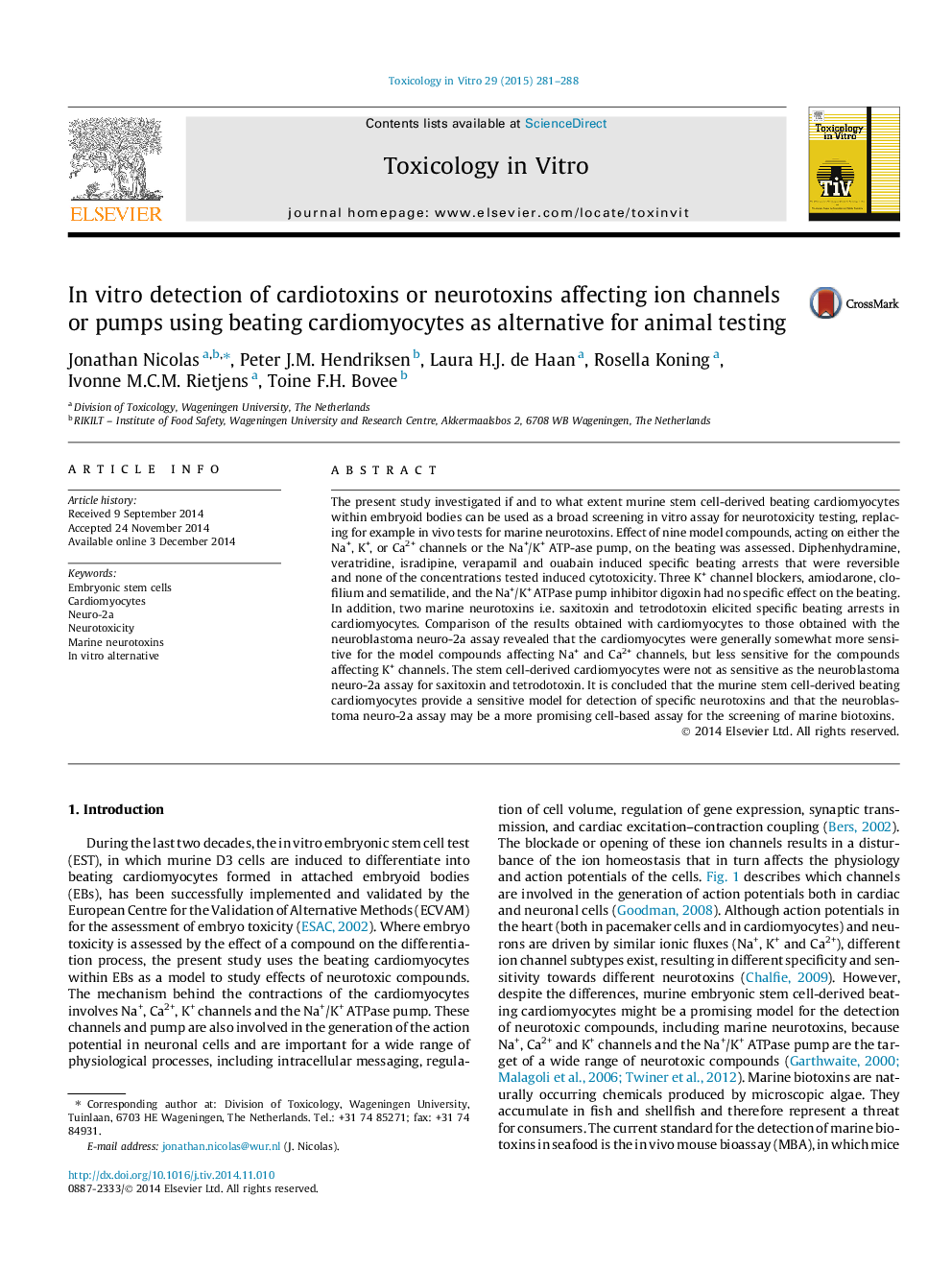| Article ID | Journal | Published Year | Pages | File Type |
|---|---|---|---|---|
| 2602466 | Toxicology in Vitro | 2015 | 8 Pages |
•We describe a cardiomyocyte-based assay for detection of neurotoxins.•Cardiomyocytes allow for detection of neurotoxins affecting ion channels or pumps.•We show that neuro-2a assay may be promising for marine neurotoxin detection.
The present study investigated if and to what extent murine stem cell-derived beating cardiomyocytes within embryoid bodies can be used as a broad screening in vitro assay for neurotoxicity testing, replacing for example in vivo tests for marine neurotoxins. Effect of nine model compounds, acting on either the Na+, K+, or Ca2+ channels or the Na+/K+ ATP-ase pump, on the beating was assessed. Diphenhydramine, veratridine, isradipine, verapamil and ouabain induced specific beating arrests that were reversible and none of the concentrations tested induced cytotoxicity. Three K+ channel blockers, amiodarone, clofilium and sematilide, and the Na+/K+ ATPase pump inhibitor digoxin had no specific effect on the beating. In addition, two marine neurotoxins i.e. saxitoxin and tetrodotoxin elicited specific beating arrests in cardiomyocytes. Comparison of the results obtained with cardiomyocytes to those obtained with the neuroblastoma neuro-2a assay revealed that the cardiomyocytes were generally somewhat more sensitive for the model compounds affecting Na+ and Ca2+ channels, but less sensitive for the compounds affecting K+ channels. The stem cell-derived cardiomyocytes were not as sensitive as the neuroblastoma neuro-2a assay for saxitoxin and tetrodotoxin. It is concluded that the murine stem cell-derived beating cardiomyocytes provide a sensitive model for detection of specific neurotoxins and that the neuroblastoma neuro-2a assay may be a more promising cell-based assay for the screening of marine biotoxins.
